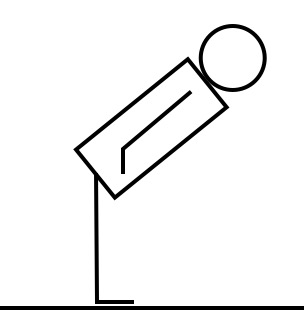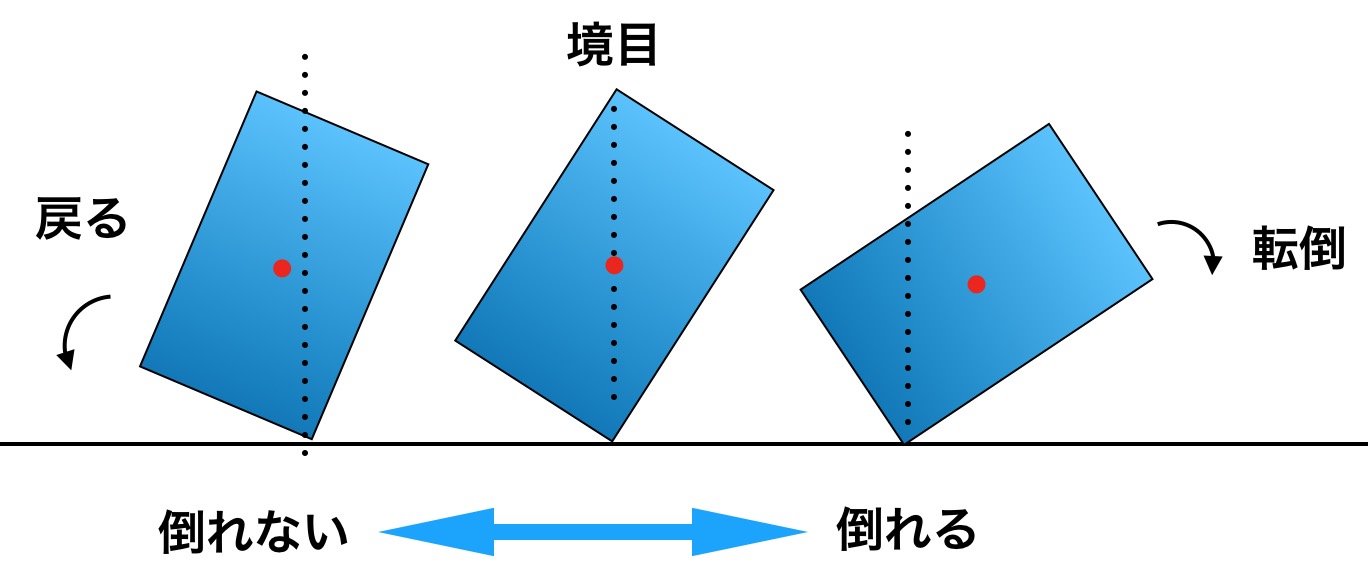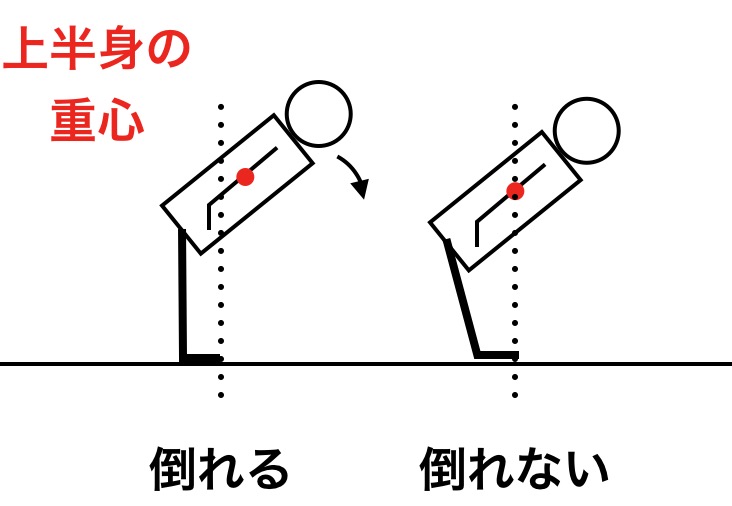I’m Ken Kuwako, the Science Trainer. Every day is an experiment.
Have you ever seen Michael Jackson’s incredible “Zero Gravity” lean? It’s that mind-bending move where he tilts his body at an impossible angle without falling, as if he’s defying gravity itself. Check out the video here.
How in the world is that even possible? It looks like pure magic, right? But this seemingly supernatural trick is actually a clever application of physics—specifically, the principle of the center of gravity.
I recently read a book called Body Mechanics for Caregiving, which is filled with helpful pictures. It provided some fascinating insights that help explain the secret behind the Zero Gravity lean. For example, what do you notice about this stick figure’s bow?

Person bowing
If you thought, “Something looks off,” you might have a natural knack for science! The reason it looks strange is a fundamental physics principle that also explains Michael Jackson’s famous lean.
The Science of Standing and Falling
In nursing and caregiving, understanding body mechanics—the way our bodies move and are affected by forces—is essential. But this knowledge isn’t just for professionals. Many of us will, at some point, have to help support or move another person. If you ever find yourself in a situation where a family member has fallen, for example, how can you move them safely and without injuring yourself? The key lies in two main points:
Lowering your center of gravity.
Getting as close to the other person as possible.
Let’s focus on the first point, the center of gravity, to scientifically explain the stick figure’s odd bow. An object’s stability—whether it stands or falls—depends on whether its center of gravity remains directly over its base of support.

If you try to bow with your back against a wall, you’ll immediately lose your balance. That’s because when you bow, you instinctively push your hips back slightly to keep your center of gravity over your feet. The reason the stick figure looks so odd is that it isn’t making this crucial adjustment.

You will fall if you don’t push your hips back slightly.
To maintain stability and avoid falling, it’s vital to keep your center of gravity low. A high center of gravity makes you unstable; even a small shift can cause you to lose your balance.

Objects with high and low centers of gravity. When tilted at the same angle, the object with the low center of gravity does not fall.
This principle is applied in both sports and caregiving. The key to staying balanced and moving others safely is to lower your center of gravity and widen your stance, or “base of support,” which makes you more stable.
The second point—getting close to the other person—is also rooted in physics. This reduces the moment arm of the force you apply, which lessens the strain on your muscles. You’ll learn more about this concept, called “torque,” in a high school physics class.
The book I read explains these physics principles with clear illustrations and applies them to practical caregiving situations. While it might be a bit pricey, it’s accessible enough for high school students. I highly recommend it!
So, what about the trick behind Michael Jackson’s move? You can find the secret here:
For Inquiries and Requests
Want to learn more about the wonders of science? We’ve put together a collection of fun at-home experiments and simple tips to help you better understand the world around you. Feel free to explore!
・Learn more about the manager, Ken Kuwako here
・For requests (writing, lectures, science classes, TV supervision, appearances, etc.), please contact us here
・Get updates on new articles by following me on X!
![]() We post experiment videos on the Science Channel!
We post experiment videos on the Science Channel!
